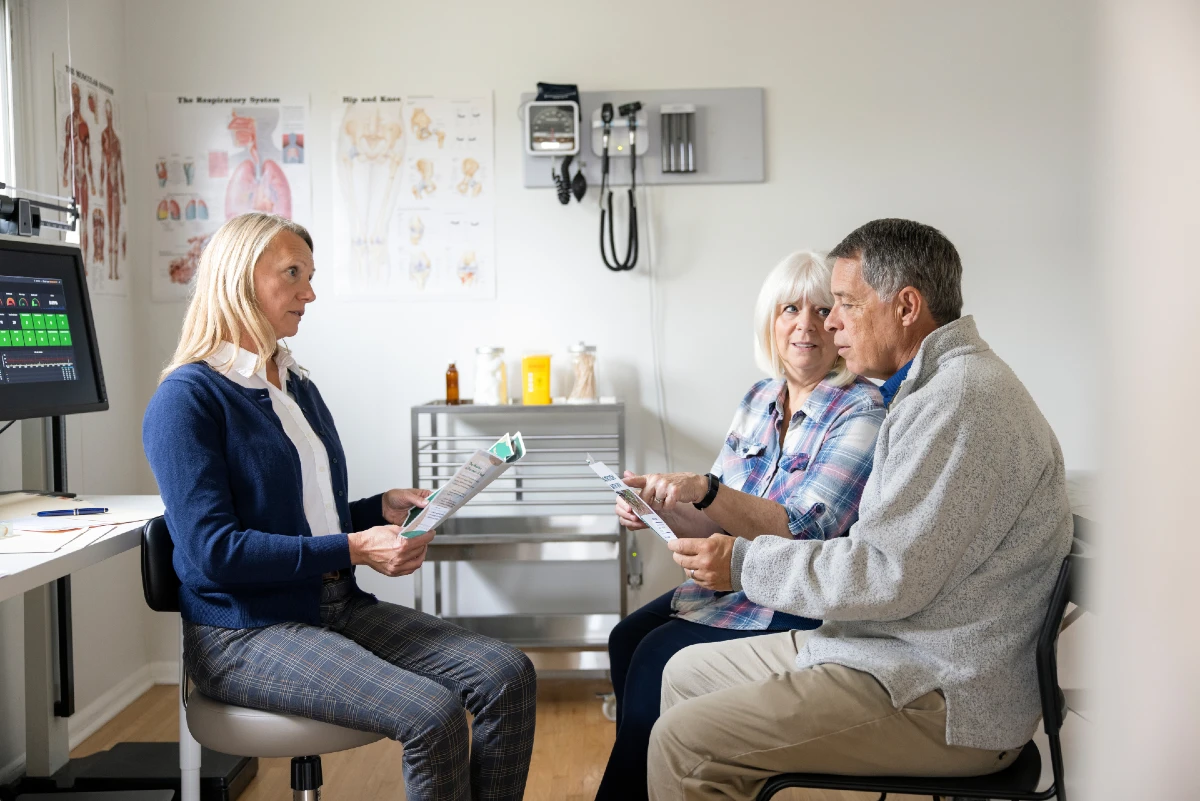We use cookies to help provide you with the best possible online experience.
By using this site, you agree that we may store and access cookies on your device. Cookie policy.
Cookie settings.
Functional Cookies
Functional Cookies are enabled by default at all times so that we can save your preferences for cookie settings and ensure site works and delivers best experience.
3rd Party Cookies
This website uses Google Analytics to collect anonymous information such as the number of visitors to the site, and the most popular pages.
Keeping this cookie enabled helps us to improve our website.

Chaperone Policy
You are very welcome to be accompanied by a trusted friend or relative at your consultation if you wish, and this is all the more important if English is not your first language, or if you feel you might not be able to express what you need clearly to the Doctor or Nurse.
In certain situations, for example with intimate examinations, you will be offered the choice of having another member of the team present at the examination. This is called chaperoning.
The purpose of this policy is to set out guidance for the use of chaperones during consultations (virtual or face to face) or clinical procedures. All medical consultations, examinations and investigations are potentially distressing. Patients may find intimate examinations particularly intrusive. This policy is to protect both patients and staff alike.
Chaperoning is the process of having a third person present to:
- Provide support, both emotional and sometimes physical to the patient.
- Protect the doctor against allegations of improper behaviour during such consultations, and sometimes to provide practical support (e.g. during IUCD fitting).
Offering a chaperone:
Once established that a chaperone may be required, the clinician must provide a clear explanation for the reason of the examination/procedure, what it will involve and obtain consent
for this. The offer of the chaperone and the patient’s response must be clearly documented including the name and position of the chaperone if present. In certain situations clinicians will ask for a chaperone to be present whilst conducting a telephone, video or face to face consultation to act as a witness to the conversation.
Prior to an examination the patient should be given adequate privacy for undressing/dressing and there should be no delay between this and the examination beginning once the patient is ready.
If either the clinician or the patient does not want the examination to go ahead without the presence of a chaperone and one is not available the examination should be rescheduled for an appropriate time, unless the delay could adversely affect the patient’s health. This should be clearly explained to the patient and documented in the patient’s records.
If the patient declines the presence of a chaperone and the clinician does not feel able to proceed without one, then:
- the clinician should further explain why they feel a chaperone is needed and re-offer
- reschedule the examination for an appropriate time when the examination could be safely performed
- If the delay to the examination could adversely affect the patient’s health and admission is not required, then the clinician should consider proceeding anyway or if able, asking another clinician to perform the exam.
- Any discussion and outcome should be clearly documented in the patient record
On rare occasions a chaperone may be required for a home visit.
Who can act as a chaperone?
A friend or relative of the patient is not an appropriate chaperone as they are neither trained nor independent. They may be present during the examination at the shared discretion of the clinician and patient but a chaperone should still be offered.
A chaperone could be any member of the practice team who has undergone appropriate training in chaperoning, is familiar with the examination/procedure being offered and has undertaken a DBS check. In the case of IUCD fitting, this would usually be a nurse/HCA assisting the clinician.
The chaperone will be present for the duration of the examination only.
Procedure
- The clinician should request for a chaperone from the patient coordinators
- Chaperone should introduce themselves to the patient and (usually) stand at the head end of the couch and explain why they are there
- They should offer any emotional or physical support to the patient as appropriate
- They should observe the examination in its entirety
- They should offer any practical support to the clinician where appropriate (e.g. IUCD fitting)
- At the end of the examination and the patient has dressed the chaperone should leave and the clinician should document the presence of the chaperone including their name and position.
Confidentiality
For procedures the chaperone will generally only be present for the examination, and most discussion should take place without them present.
Patients should be reassured that staff fully understand their duty of confidentiality.
Issues specific to children
In the case of children a chaperone would normally be a parent or carer or alternatively someone known and trusted or chosen by the child. Patients may be accompanied by another minor of the same age. For competent young adults the guidance relating to adults is applicable.
Children and their parents or guardians must receive an appropriate explanation of the procedure in order to obtain their co-operation and understanding. If a minor presents in the absence of a parent or guardian the healthcare professional must ascertain if they are capable of understanding the need for examination. In these cases it would be advisable for consent to be secured and a formal chaperone to be present for any intimate examinations
Read codes
- Chaperone refused 9NP2
- Chaperone offered PNP0
- Chaperone present 9NP1
